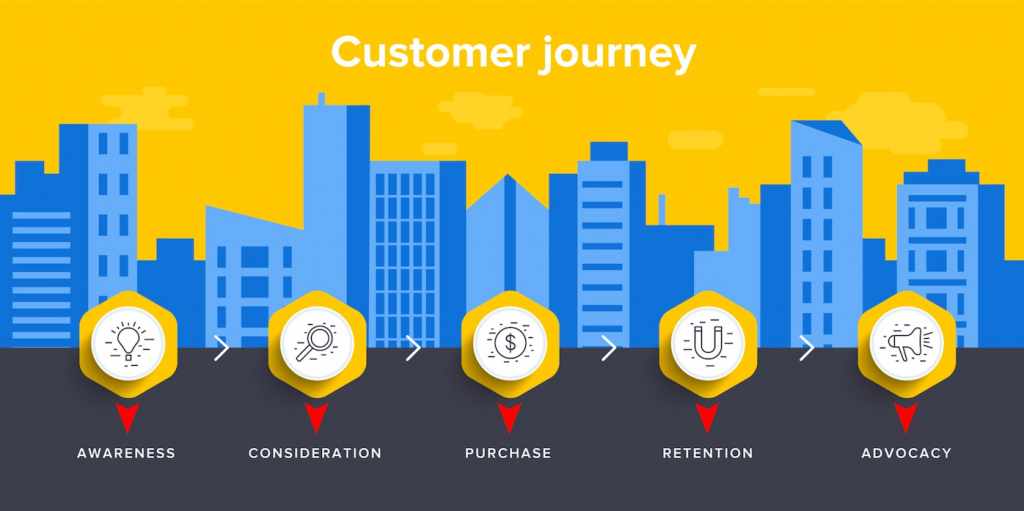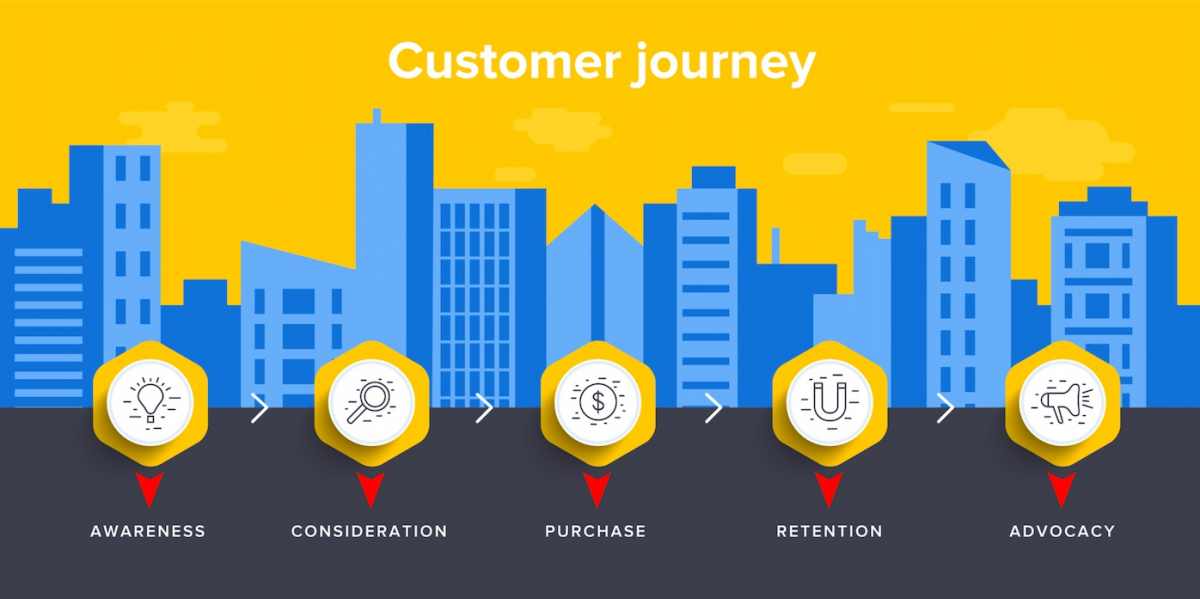Customer Journey Mapping

Customer Journey Mapping
For a typical customer, the purchasing process involves many steps where interactions or touch points with the seller occur. There are also emotions that are felt before, during or after such experiences.
Customer Journey involves everything that is happening throughout the buying process. Below are some of the key elements and representative questions associated with the touch points. The customer:
Becomes motivated to buy a product (or service) — What causes the desire or need to purchase it? Gains awareness of product — Where does one make initial contact with,and learn about sellers? Develops questions about the product and alternatives–What inquiries, fact finding efforts or contacts are made via websites, store visits or phone calls? ]Discusses with others –Who may exert influence or has bought the product? Creates a consideration set– Which other products are compared, and why? Makes the purchase in person, on phone or online – Was it a pleasant, easy, fast experience or not, and why? Has after-sales feelings–Was buyer pleased with product or have any remorse?–What, if any interaction was there with customer support or service staff? Repeat buys or renews
Journey Mapping allows one to capture, and then visually display the customer’s interactions, thoughts, and emotions. It can become the foundation for a story that provides the opportunity to discuss and better understand the total experience across all touch points between the customer and a business.
Why use Customer Journey Mapping?
[/fusion_text][fusion_text]Can you put yourself in the role of your customer? If you are responsible for selling a product or service that you have not actually purchased or used, this could be a considerable challenge. Yet it is a common one. And often, a single research technique (or worse, none at all!) is used to gain information to inform a company about its customers.
Customer Journey Mapping enables you to be even more customer-centric by helping to view your product, brand and company through the eyes of your customers. If you know how and when customers interact with, and feel about your brand, it is easier to find gaps where improvements can be made. You can tailor your communications to reach customers at each step of their journeys toward a purchase.
Examples:
- Layout your website to facilitate discovery of specific content.
- Focus on social media or mobile devices.
- Fine tune text used in ad copy.
- Modify product and/or packaging design.
- If you can find ways to differentiate both your product and company via a better understanding about your customers at each step of the buying process, you should be able to gain a competitive advantage.
When should Customer Journey Mapping be used?
Below are a few instances where this technique can be of help. You need to know how, when and where different segments of your market experience your product.You want to make the customer interface with various business units of your company a smoother, more consistent one. You want to discover and leverage positive aspects of customer journeys to create more loyalty and recommendations. You want to improve the way prospects and new customers perceive and feel about your product and company. You wish to expedite prospects’ and customers’ movement along their journeys to ultimate sales.
How to develop Customer Journey Maps
Unlike traditional market research, the creation of a customer journey map represents a new approach that requires the ability to observe and gather the many situations and times where a company “touches” its customers.
You need to use a variety of research methods to gather insights on your customers’ journey. Here are a few: In-depth interviews and shop-alongs — observe and ask customers about their actions, feelings and decisions. Ethnographic studies – observe or have consumers report about the natural settings where they interact with your product. Diaries – have customers take photos or record videos with comments or sentiments each day during (and in some cases, after) the purchase process. Web analytics – used properly, it is possible to determine what users are looking for, when and how often. Social media – can be monitored for “likes”, criticisms or other sentiments.
Next Steps
- A topline summary of all findings should be presented as an infographic or similar simplified map of the customer’s journey.
- A timeline should be included to indicate major stages of the buying process.
- Keep it as simple and intuitive as possible.
- Focus 100% on your customer!


